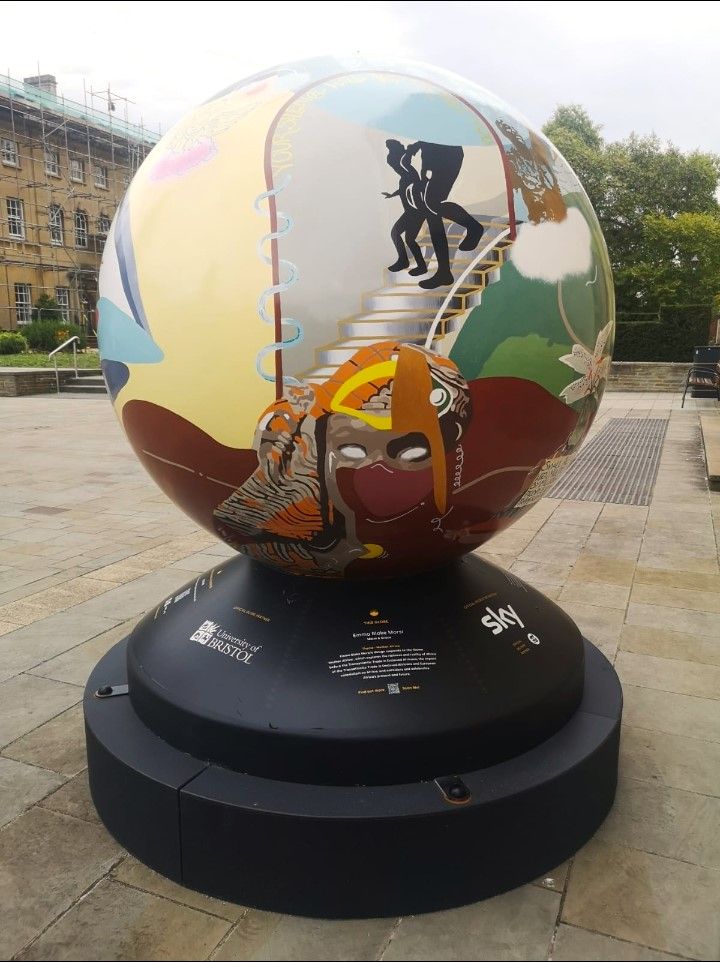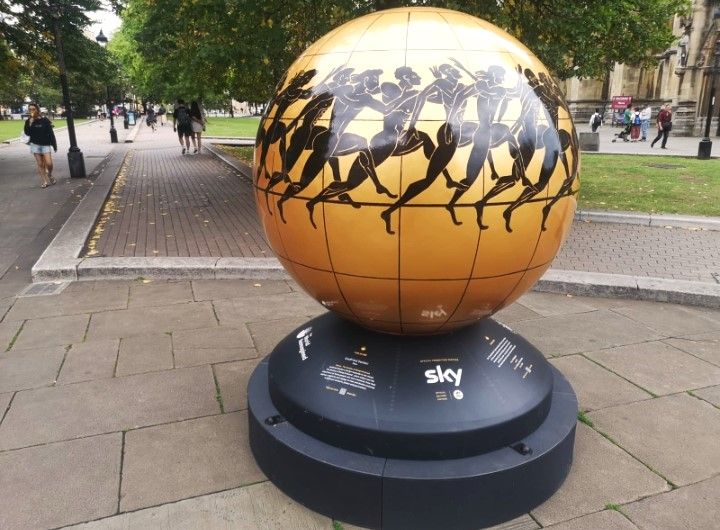By Milan Perera, Arts Critic Columnist
Elie Wiesel, the acclaimed Jewish writer, who wrote the best-selling memoir Night, once told an audience “When you listen to a witness, you become a witness.” These powerful words have a newly found relevance in an age ravaged by ignorance and apathy regarding important segments of our history. It is not familiarity that breeds contempt, but ignorance. The transformative power of art is never to be underestimated; it is capable of bypassing stifling obstacles such as language and customs and can make a visceral impact that has the power to educate and elucidate.
With the collapse of the Colston statue with a hollow metallic thud, the decolonisation of education and art has been dominating the public discourse. As we are at a tentative beginning of an upward journey of education to shed some light on hitherto neglected aspects of our history, the timing of The World Reimagined art trail could not have been more auspicious. It is currently stretching across the city of Bristol, designed to last between 90-120 minutes, with ten stops. Each stop is installed with a globe that is decorated by a local artist. The main objective of this momentous project is “to transform how we understand the Transatlantic Trade in Enslaved Africans and its impact on all of us”. What is loosely termed as “Black History” is no longer a fringe element or a footnote to the monolith of British History, but an integral part of its richness and vibrancy.
The fibreglass sculptures measure 1.4m in diameter and 1.7m in height. They were designed by celebrated artist Yinka Shonibare CBE, whose decision to utilise a Globe was made specifically to emphasise the geographic nature, and world-changing impact, of the Transatlantic Slave Trade. According to the Bristol based historian and broadcaster, David Olusoga, Edward Colston was associated with the Royal African Company between 1680 and 1692 which shipped 84,000 African natives into slavery, including 12,000 children. Some 19,000 of the enslaved people died during the perilous journey to the Americas and the Caribbean. These victims of Transatlantic Slave Trade have become a mere faceless statistic. To alleviate this gross injustice even by a small measure, each globe is associated with a plaque rekindling the memory of an individual whose presence otherwise would have been lost under the sands of time.

Aside from Bristol, The World Reimagined has trails in Birmingham, Leeds, Leicester, Liverpool City Region, London, and Swansea. All of these trails are connected via a digital platform that enables visitors to dive into a unique heritage collection that brings this history to life in an illuminating manner.
The art trail in Bristol kicks off its journey from the Royal Fort Gardens at the University of Bristol and concludes at Cabot Circus, the commercial quarter in Bristol. The trail is dotted with globes at various iconic landmarks such as College Green, the Queen’s Square, Castle Street, and the Old Market.
Each Globe is dedicated to a core theme in the Transatlantic Slave Trade, such as ‘Mother Africa’, ‘The Reality of Being Enslaved, and ‘Still We Rise.’ The artists have used multi-disciplinary medium to convey the message from prose writing to collages, to paintings. Contributing local artists are Michele Curtis, Felix FLX Braun, 3Dom, Godfried Donkor, Adam Grose, Bandele Iyapo, Emma Blake Morsi, Oshii, and Jasmine Thompson.
The starting point of the trail in the Royal Fort Gardens at the University of Bristol has an added significance as it stands within a short distance from the newly erected monument of Henrietta Lacks, whose contribution to cancer research and ground-breaking medical innovations had been overlooked until recently. The aforementioned globe was painted by the local artist Emma Blake Morsi and is called Maize & Grace. It highlights the ‘Mother Africa’ theme and tells the harrowing but courageous untold stories of African environmental heroes and sovereignty guardians. Elaborating on her work, Morsi said “Each section brings to life reimagined parts of our pre-colonial, traditional and colonial history as well as our present-day reality and future potential. It aims to honour those who bravely fought for justice...”
Organisers intend the works to “enable the public to experience, discover and be inspired by art as well as present the opportunity to be part of the discourse around racial justice and what it means to be British”.
As you kickstart the next chapter of your life as an undergraduate at the University of Bristol, it is of paramount importance to explore the city during the Freshers Week! There is no substitute for actually embarking on a tour that would supersede the glossy prospectuses and Lonely Planet city guides. The World Imagined art trail will not only take you to the iconic landmarks of the city centre but will also transform your understanding of a hitherto neglected aspect our proud history.
The Bristol trail began on August 13 and concludes on October 31, the end of Black History Month.
Featured Image: courtesy of Milan Perera
Have you seen the art globes around Bristol?









